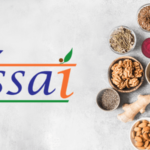Understanding Statistics: A Guide to the Basics and Its Applications
Statistics is a branch of mathematics that deals with the collection, analysis, interpretation, presentation, and organization of data. It plays a crucial role in various fields, including business, science, medicine, social sciences, and more. By transforming raw data into meaningful information, statistics help individuals and organizations make informed decisions and predictions. This article provides an overview of key statistical concepts and their practical applications.
Key Concepts in Statistics:
1. Descriptive Statistics
Descriptive statistics involves summarizing and organizing data to make it easier to understand. This includes:
- Measures of Central Tendency: These are statistical measures that describe the center of a data set. The most common measures are the mean (average), median (middle value), and mode (most frequent value). For instance, in a set of exam scores, the mean score provides an overall average performance, while the median score indicates the middle student’s performance.
- Measures of Dispersion: These measures describe the spread or variability of data. Key measures include range (difference between the highest and lowest values), variance (average squared deviation from the mean), and standard deviation (square root of the variance). Understanding dispersion helps assess the consistency of data.
- Frequency Distributions: This involves organizing data into classes or intervals to show how often different values occur. Frequency distributions are often visualized using histograms or bar charts.
2. Inferential Statistics
Inferential statistics uses sample data to make generalizations about a larger population. This involves:
- Hypothesis Testing: This is a method of making inferences about population parameters based on sample data. Hypothesis tests evaluate whether observed effects or differences are statistically significant or if they could have occurred by chance. Common tests include the t-test, chi-square test, and ANOVA (analysis of variance).
- Confidence Intervals: These provide a range of values within which a population parameter is likely to fall. A 95% confidence interval, for example, means there is a 95% chance that the interval contains the true parameter value.
- Regression Analysis: Regression analysis examines the relationship between dependent and independent variables. It helps determine how changes in one variable affect another. For example, linear regression can predict sales based on advertising expenditure.
3. Probability
Probability is the foundation of inferential statistics and deals with the likelihood of different outcomes. Key concepts include:
- Probability Distributions: These are functions that describe the likelihood of various outcomes. Examples include the normal distribution, which is symmetric and bell-shaped, and the binomial distribution, which applies to scenarios with two possible outcomes.
- Bayesian Statistics: This approach updates the probability of a hypothesis as more evidence or information becomes available. Bayesian methods are used for decision-making and predictive modeling.
Applications of Statistics:
Statistics is used across a wide range of disciplines to inform decision-making and guide research. Here are a few notable applications:
1. Business and Economics
- Market Research: Businesses use statistical analysis to understand consumer behavior, preferences, and trends. Surveys and data analysis help companies design products, set prices, and develop marketing strategies.
- Financial Analysis: Statistics play a critical role in assessing investment risks, forecasting market trends, and evaluating financial performance. Techniques like regression analysis and time series forecasting are commonly used.
2. Healthcare and Medicine
- Clinical Trials: Statistics are essential in designing and analyzing clinical trials to determine the effectiveness and safety of new treatments. Hypothesis testing and survival analysis are key techniques used in this field.
- Epidemiology: Statistics help track the spread of diseases, identify risk factors, and evaluate public health interventions. Data analysis supports decisions in disease prevention and health policy.
3. Social Sciences
- Survey Analysis: In sociology, psychology, and political science, surveys and questionnaires generate data that are analyzed statistically to understand human behavior, social trends, and political opinions.
- Educational Research: Statistics are used to assess educational outcomes, evaluate teaching methods, and improve student performance. Techniques like ANOVA and regression analysis are commonly applied.
4. Science and Engineering
- Experimental Design: Statistics guide the design of experiments and the analysis of experimental data. This ensures that experiments are conducted efficiently and results are valid.
- Quality Control: In manufacturing and engineering, statistical methods are used for quality control and process improvement. Techniques like control charts and process capability analysis help maintain product quality.
Conclusion:
Statistics is a powerful tool for understanding and interpreting data. By providing methods for summarizing, analyzing, and making inferences, statistics enables individuals and organizations to make informed decisions and predictions. Its applications span various fields, from business and healthcare to social sciences and engineering, demonstrating its broad relevance and importance. As data becomes increasingly central to decision-making in our data-driven world, a solid understanding of statistics is essential for navigating and leveraging the wealth of information available.










